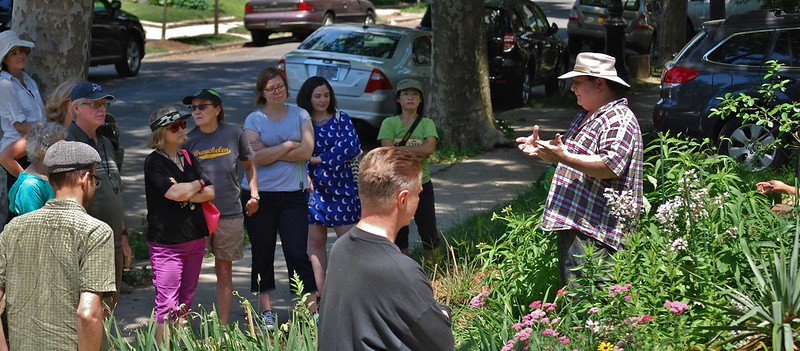Updated 2021-09-25: Added Links and QR Codes to “Getting Started with iNaturalist”.
I’m pleased to announce that Saturday, September 25th, I will be leading two iNaturalist Workshops “in the field” at The High Line. This is one of several workshops, and many other events, they have scheduled for Insectageddon, which runs from 3-6pm that Saturday afternoon.

I’ll be doing two walks:
- 3:15-4:15 pm
- 4:45-5:45 pm
When not out on one of the walks, I’ll have a table in The High Line’s Chelsea Market Passage, between 15th and 16th Streets. Please sign up there for one of the two workshops, as space will be limited. Each walk will start out from that location.
iNaturalist Workshop
Hosted by Chris Kreussling, aka “Flatbush Gardener”
Join Chris Kreussling for a walk on the High Line to explore plant and insect interactions and learn about the citizen scientist observation gathering tool iNaturalist. Tours begin at 3:30 and 4:45; please sign up upon arrival at Chris’s table in Chelsea Market Passage. Chris is a Brooklyn naturalist and gardener specializing in gardening with native plants to create habitat for pollinators and other invertebrates.
Visiting the High Line
Note that there are weekend restrictions in place for visitors to The High Line. You must register for timed entry; pre-registration is highly recommended. The only weekend entrances open are at Gansevoort Street, 23rd Street, and 30th Street.
Please give yourself plenty of time to get to my table in Chelse Market Passage for the start of the walk. The 14th Street entrance is exit-only on weekends. The closest weekend entrance is Gansevoort Street, at the corner of Washington Street, the southern end of The High Line. This entrance is just three blocks south of 14th Street.
Getting Started with iNaturalist
- Sign up at https://www.inaturalist.org/signup

- You must be 13 or older.
- You can link to your existing social media account, such as Twitter or Facebook
- If you don’t have an existing social media account you want to link to, you can create a new account with a valid email address
- If you have existing photos you want to identify, you can begin uploading them to iNaturalist through your Web browser.
- Recommended: Also install the iNaturalist app on your Android phone or iPhone or other Apple device. Be sure to link it to the account you just created. You can then take photos on your phone and upload them directly to iNaturalist.
Android:
https://play.google.com/store/apps/details?id=org.inaturalist.android
Apple/iPhone:
https://itunes.apple.com/us/app/inaturalist/id421397028?mt=8
Related Content
Native Pollinator Walks, Wave Hill, Sunday, June 27, 2021-06-14
Pollinator Safari: Urban Insect Gardening with Native Plants, 2019-06-23
NYC Wildflower Week Tour of my Gardens, 2016-05-15
NYC Wildflower Week Pollinator Safari of my Gardens, 2014-06-21

